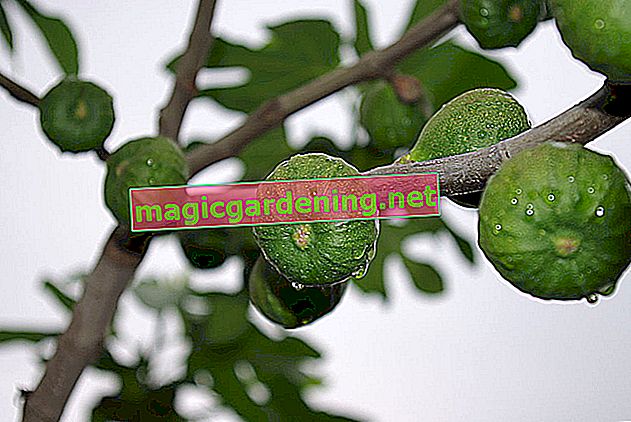
The fig is a stone fruit
The fig has an interesting pollination ecology, as a result of which the aromatic fruits develop after three to five months. Like raspberries, they are collective fruits (Syconium) and consist of numerous small, interconnected stone fruits. The aromatic pulp consists of axial tissue, which surrounds the small flowers and protects the fruit.
also read
- The blossoms of the fig tree: a natural phenomenon
- Caring for the fig tree
- The rather late budding of the fig tree
Fig fruits fresh from the tree - an incomparable pleasure
In the main fig growing areas, the fruits can be harvested three times a year. The pulp is colored pale pink to red depending on the variety. If you want to eat the fig raw, it is sufficient to wash the fruit well and cut off the stem. You can eat the bowl with you. For varieties with thicker skin, you can alternatively cut the fruit in half and scoop out the pulp with the many small stones. The aromatic sweetness of the fruit goes perfectly with raw ham or goat cheese and underlines the aroma of the salty dishes.
Figs - packed full of valuable ingredients
Figs are considered a superfood because the small fruits are full of vitamins and minerals such as potassium, calcium, magnesium and iron. The digestive enzymes they contain stimulate the intestinal activity in a mild way. A fig has less than 40 calories and is filling for a long time thanks to the fiber it contains.
Easily perishable fruits
If the fig gives way to light pressure, it is fully ripe. The fruit should give off an aromatic scent. If, on the other hand, the fig feels slightly mushy and smells unpleasantly sweet, it ferments inside and is no longer suitable for consumption.
Ripe figs spoil quickly: even when stored next to each other in the refrigerator, the fruits only last two to three days. Take the figs out of the refrigerator a few hours before you eat them so that they develop their full aroma at room temperature.
Tips & Tricks
Figs are among those fruits that contain a relatively high amount of oxalic acid. If you have kidney problems, you should clarify with your doctor how many figs you can safely consume. Nevertheless, you do not have to forego the consumption of figs, because the oxalic acid content is drastically reduced by cooking.
SKb








